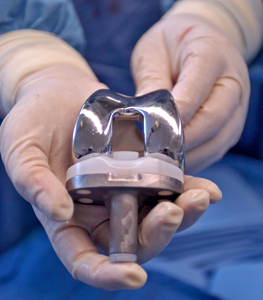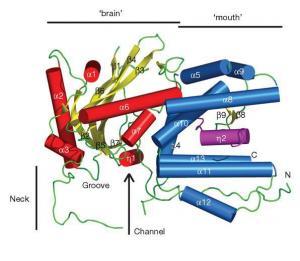As joint replacements have increased, so have payments to surgeons.

|
| ©CLEM MURRAY / Inquirer Staff Photographer |
| Robert E. Booth Jr. with an artificial knee during surgery at Pennsylvania Hospital. Booth says he performs about 1,200 knee replacements a year. |
In the past decade, hip- and knee-replacement surgery has exploded - nearly doubling to about 750,000 operations a year and fueling a multibillion-dollar implant industry with profit margins approaching 20 percent.
With so much money in play, competition among artificial hip and knee manufacturers has fostered a system of five-, six- and seven-figure payments to doctors in royalties, consulting deals and speaking fees.




